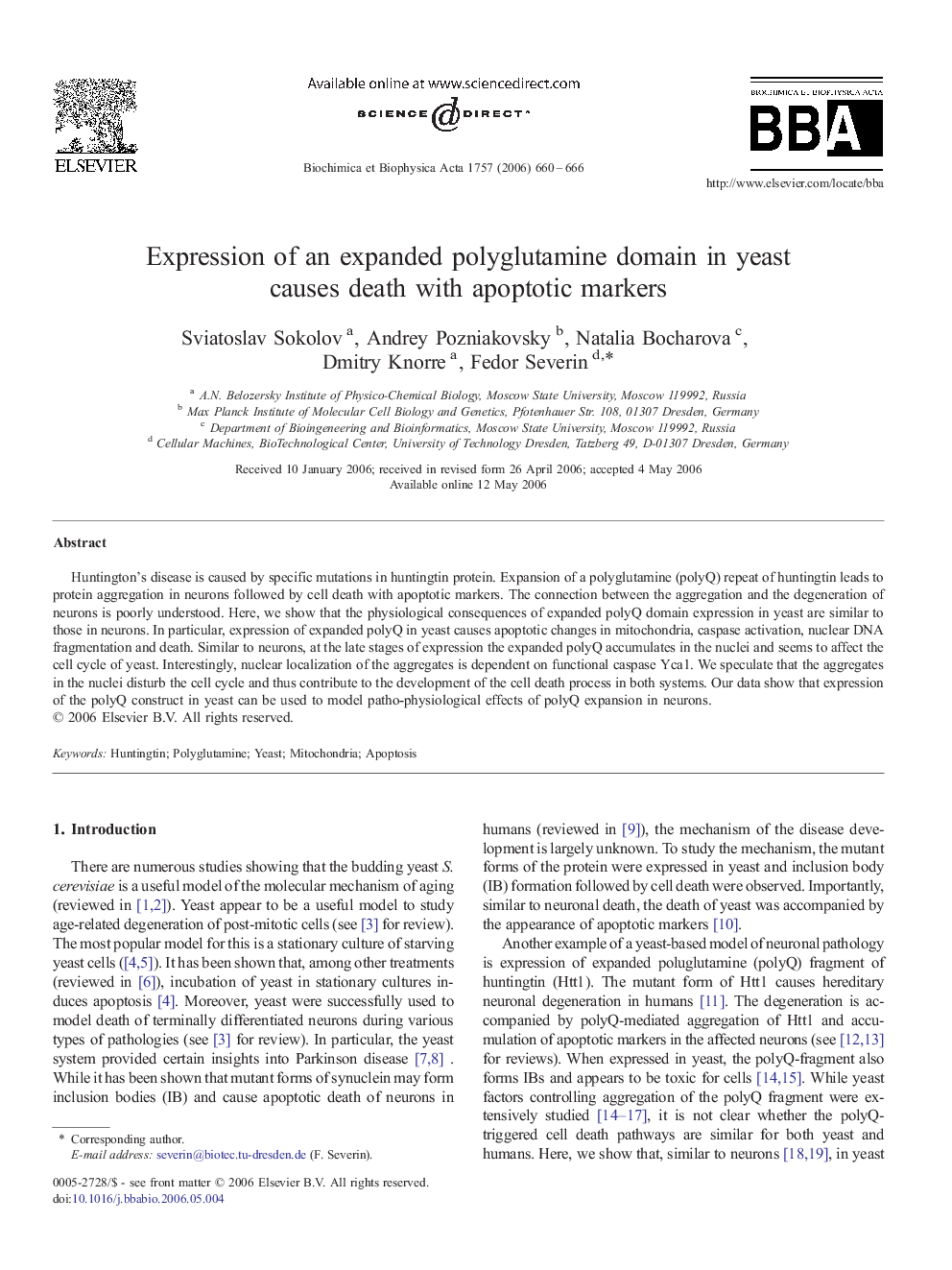| Article ID | Journal | Published Year | Pages | File Type |
|---|---|---|---|---|
| 1943736 | Biochimica et Biophysica Acta (BBA) - Bioenergetics | 2006 | 7 Pages |
Huntington's disease is caused by specific mutations in huntingtin protein. Expansion of a polyglutamine (polyQ) repeat of huntingtin leads to protein aggregation in neurons followed by cell death with apoptotic markers. The connection between the aggregation and the degeneration of neurons is poorly understood. Here, we show that the physiological consequences of expanded polyQ domain expression in yeast are similar to those in neurons. In particular, expression of expanded polyQ in yeast causes apoptotic changes in mitochondria, caspase activation, nuclear DNA fragmentation and death. Similar to neurons, at the late stages of expression the expanded polyQ accumulates in the nuclei and seems to affect the cell cycle of yeast. Interestingly, nuclear localization of the aggregates is dependent on functional caspase Yca1. We speculate that the aggregates in the nuclei disturb the cell cycle and thus contribute to the development of the cell death process in both systems. Our data show that expression of the polyQ construct in yeast can be used to model patho-physiological effects of polyQ expansion in neurons.
